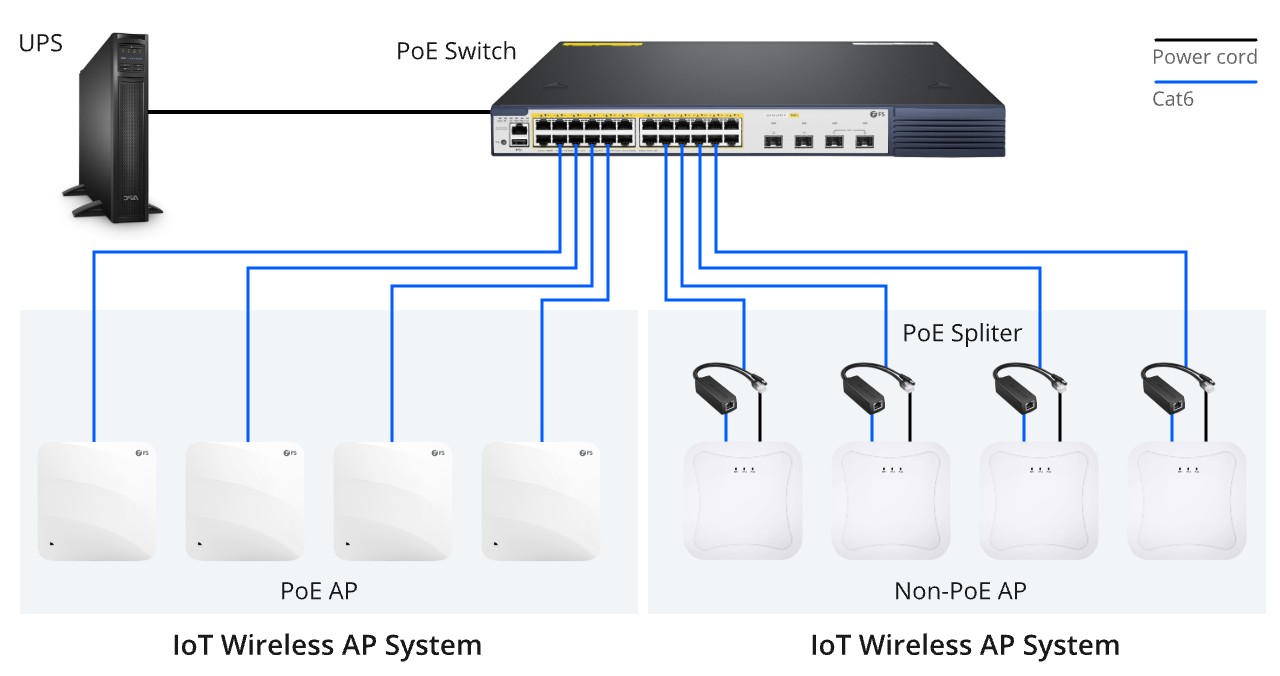PoE Technology Trends in IoT
In today's ever-evolving digital landscape, where the Internet of Things (IoT) is reshaping industries and everyday life, staying at the cutting edge of technology is imperative. One technology making a profound impact on IoT is Power over Ethernet (PoE). In this article, we'll delve into a comprehensive understanding of PoE, explore its current applications, and unveil the pivotal technological trends shaping its role in the dynamic world of IoT.
Understanding PoE Technology
At the heart of many IoT devices and applications lies Power over Ethernet (PoE) technology. But what precisely is PoE, and why is it instrumental in the IoT landscape?
PoE Simplified
Power over Ethernet, or PoE, is a technology that allows both power and data to be transmitted over standard Ethernet cables. In the context of IoT, this means that IoT devices can be powered and connected to the network using a single cable. This technology simplifies installations and reduces the need for additional power sources, making it an ideal solution for a wide range of applications.
Key Components of PoE
To understand PoE fully, let's break it down:
-
PoE Switches: These are network switches that have built-in PoE capabilities. They can supply power to PoE-enabled devices like security cameras, access points, and sensors.
-
Injectors and Midspan Devices: These are separate devices that can add PoE capabilities to an existing network. They're useful when you want to upgrade a non-PoE network to support PoE devices.
-
PoE Devices: These are the IoT devices that can be powered and connected via PoE, eliminating the need for separate power sources.
Current Applications of PoE in IoT
PoE technology has found numerous applications in the world of IoT. Some of the most common applications include:
-
1. IoT Security Cameras:
-
PoE simplifies the installation of security cameras. With a single cable providing both power and data, cameras can be placed in more locations, enhancing security.

-
2. IoT Access Points:
-
Access points in wireless networks benefit from PoE, as it reduces the complexity of adding or relocating access points.

-
3. IoT Sensors:
-
Sensors used in various IoT applications can be powered and connected using PoE, streamlining their integration into the network.

Emerging Trends in PoE Technology
As technology continues to advance, PoE is not standing still. Several compelling trends are propelling the integration of PoE technology into cutting-edge IoT solutions, encompassing:
-
1. The rise of high-power PoE:
-
The advent of the IEEE 802.3bt standard, often referred to as PoE++, has introduced a groundbreaking power class capable of delivering a remarkable 90W through a single Ethernet cable. This breakthrough broadens the horizons for powering a diverse array of IoT devices, including high-power consumers such as smart displays, digital signage, and industrial sensors.
-
2. The development of PoE over long distances:
-
While conventional PoE systems can typically convey power over distances of up to 100 meters, contemporary PoE solutions are extending this reach to several hundred meters, and in some cases, even kilometers. This advancement paves the way for the deployment of PoE in remote or hard-to-access locales, facilitating applications like outdoor security cameras and traffic monitoring systems.
-
3. The emergence of intelligent PoE systems:
-
PoE systems are evolving into increasingly sophisticated and intelligent ecosystems. This evolution opens the door to more streamlined power management and control. For instance, advanced PoE systems empower remote activation and deactivation of devices. Additionally, they enable dynamic adjustments in device power consumption based on real-time demand, resulting in heightened energy efficiency.
Future Prospects for PoE in IoT
The prospects for PoE in the IoT are highly promising. As the deployment of 5G networks gains momentum and advancements in technology continue, PoE is poised to play an increasingly significant role. Let's explore these exciting possibilities:
-
1. Enabling IoT Growth with 5G and PoE
-
The widespread adoption of 5G networks will be a driving force behind IoT expansion. PoE will be instrumental in providing the necessary infrastructure to support high-speed, low-latency connectivity and enable seamless integration of IoT devices.
-
2. Scalability and Flexibility for IoT Deployments
-
PoE's ability to deliver both power and data through a single Ethernet cable adds flexibility and scalability to IoT deployments. This streamlined approach eliminates the need for separate power sources and simplifies the overall infrastructure, facilitating the expansion of IoT networks.
Challenges and Solutions
While PoE offers numerous benefits for IoT, it's not without its challenges. These challenges include compatibility issues and power limits. Fortunately, solutions exist to address these challenges, such as using midspan devices to adapt non-PoE networks or selecting higher power PoE solutions for devices that demand more energy.
Conclusion
PoE is a critical technology for enabling the next generation of smart devices and services. PoE is versatile, efficient, cost-effective, and well-suited for a wide range of IoT applications. As the IoT market continues to grow, PoE is expected to play an increasingly important role in enabling the next generation of smart devices and services.
You might be interested in
Email Address

-
PoE vs PoE+ vs PoE++ Switch: How to Choose?
May 30, 2024













